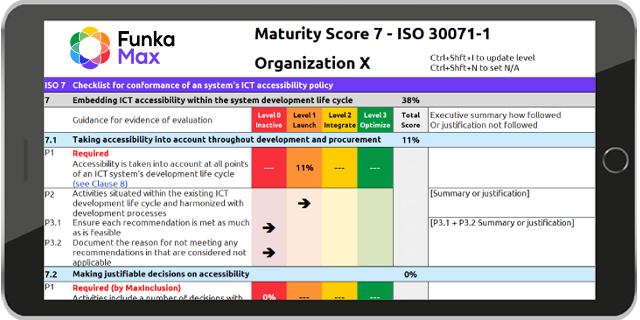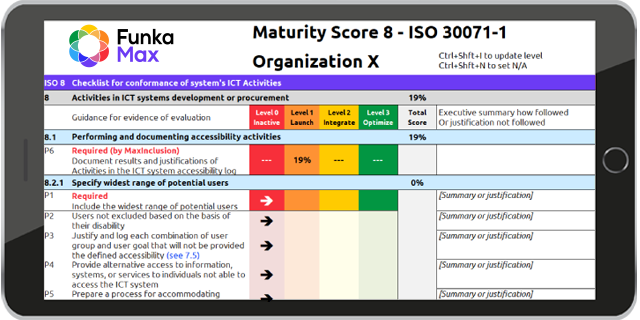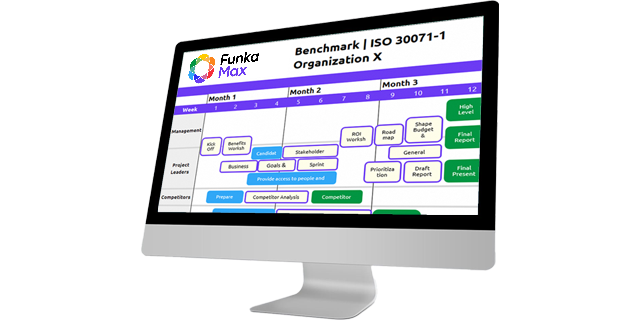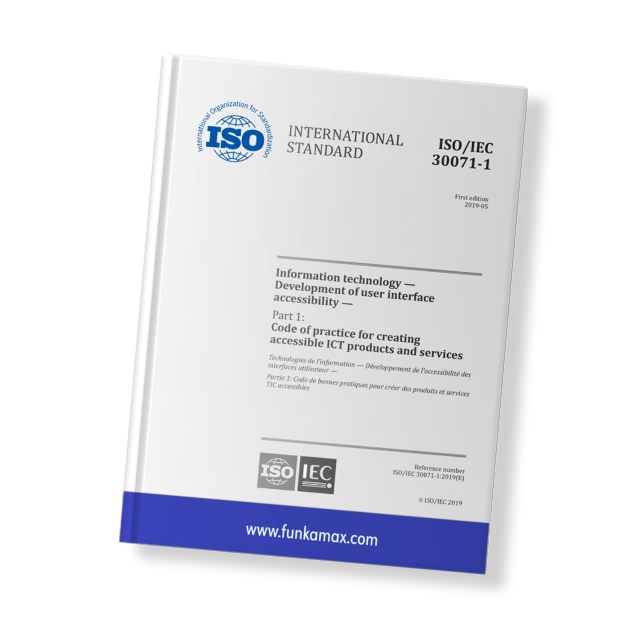What is ISO 30071-1
ISO 30071 is a standard developed by the International Organization for Standardization (ISO) titled “ISO 30071-1, development of user interface accessibility“.
This standard adopts a comprehensive approach towards ensuring the accessibility of information and communications technology (ICT) by providing instructions on implementing ICT accessibility at both organizational and system development levels.
It offers guidance on the construction and upkeep of ICT systems (including products and services) that cater to a wide range of users, including those with disabilities and older individuals, helping to comply with e.g.: the European Accessibility Act (EAA), the Web Accessibility Directive (WAD), Section 508, and more.
It’s Applicable to all types of organizations; this document encompasses various ICT systems and the outcomes of converging and emerging technologies within an organization.
The reason why ISO 30071-1 is important
It enables entire organizations to excel in inclusive design and assists product teams in implementing accessibility standards during the product development process.
Focus for ISO lies on organizational support in risk assessments and strategy where product guidance has a focus on the complete development life cycle and all activities applicable.
Organizational Policy

Responsibilities and documentation embedding accessibility.
- Contents of Policy
- Creating Goals
- Adding Accessibility
- Checkpoints to Monitor
System Policy

Embedding accessibility within the Development Life Cycle.
- Taking accessibility into account
- Justifiable Decisions
- Assuring in Life Cycle
- Logs and Statements
Activities

Activities in system development or procurement.
- Potential Users
- Goals, Tasks, Needs
- Requirements, Approach
- Communication
How to win in digital accessibility using EN 17161 and ISO 30071-1
Investing in digital accessibility is a moral imperative and a smart business decision.
In today’s digital age, where technology dominates almost every aspect of our lives, digital accessibility has become a crucial consideration for businesses.
Why should you invest in Digital Accessibility?
Embracing accessibility benefits not only people with disabilities, older people, and other diverse users but everyone!

Six key benefits why ISO 30071-1 will improve your business
Highlighting the key benefits why companies should prioritize and invest in digital accessibility.
- Expanding Customer Base
- Legal and Regulatory Compliance
- Ethical and Social Commitment
- Innovation and Creativity
- Competitive Advantage
- Improved User Experience
We help organizations
Gap-Analysis

Comprehending the current status of your organization’s culture and processes through an evaluation of the relative performance in delivering inclusive and accessible products and services.
Maturity Progress

It is insufficient to make individual products in an organizational silo accessible. It is of critical importance that an organization establish repeatable internal processes and methods.
Accessibility Audits

Audits for accessibility provide insights into whether the product already built conforms to the global standard WCAG (Web Content Accessibility Guidelines).
Enablement and maturity from the top down
“The technology to enable most information technology for accessibility has existed for the past decade, so why isn’t all IT accessible yet?
One main culprit is the lack of commitment to IT accessibility policy, planning, process integration, and other factors that drive organization-wide accessibility enablement and maturity from the top down.”

Strategic Advisor

